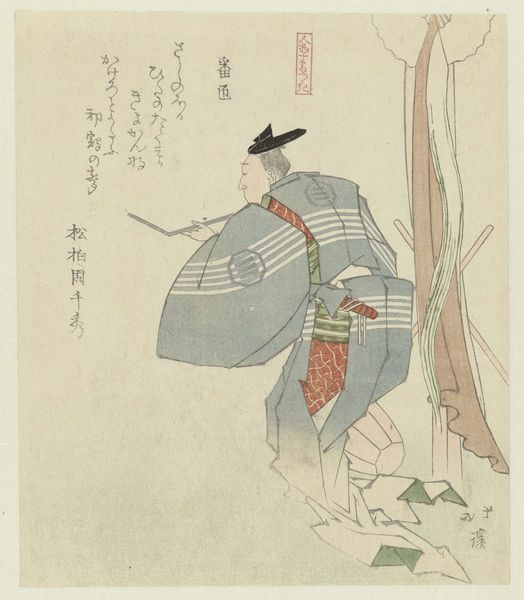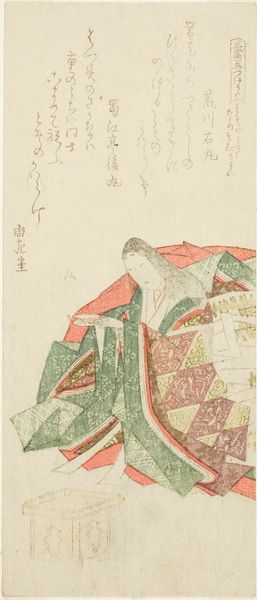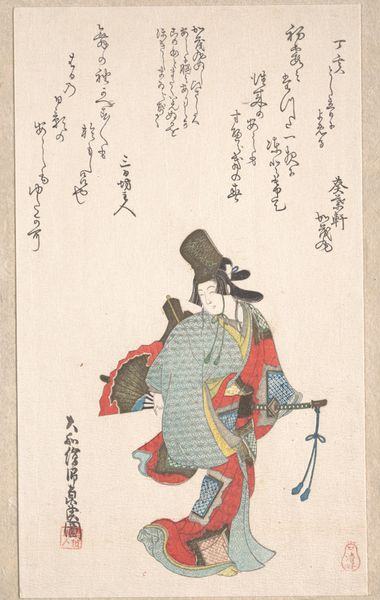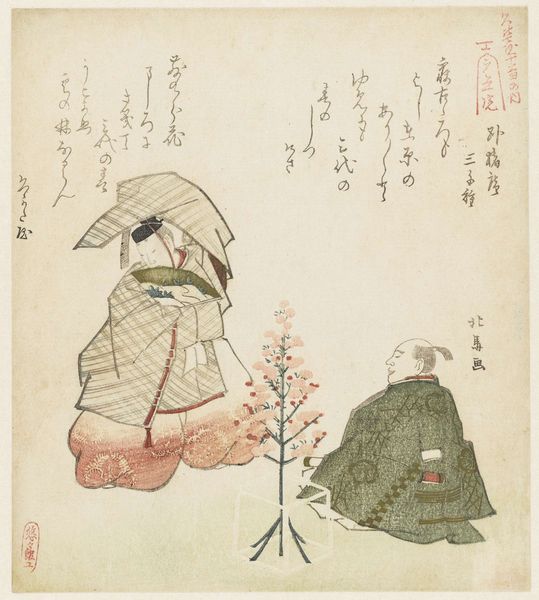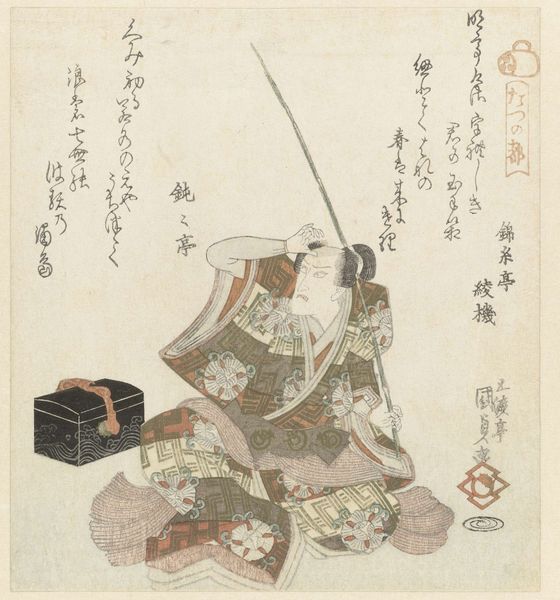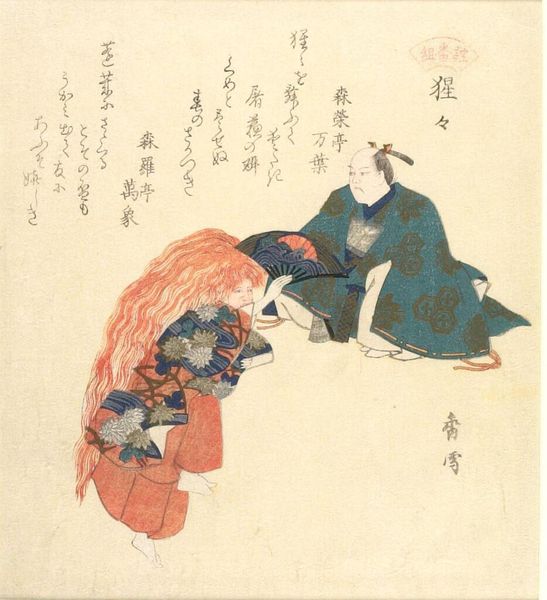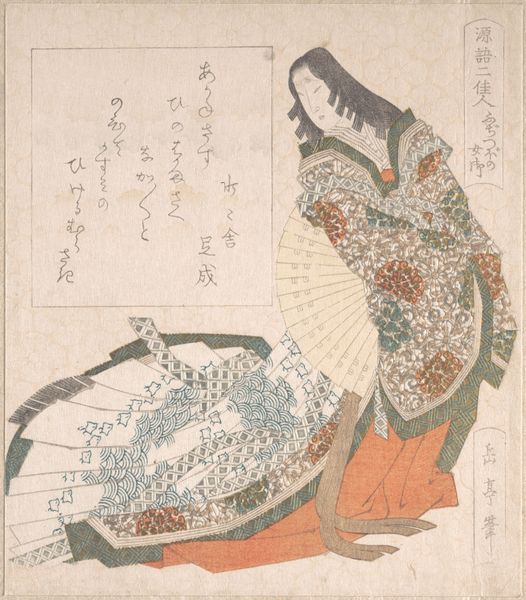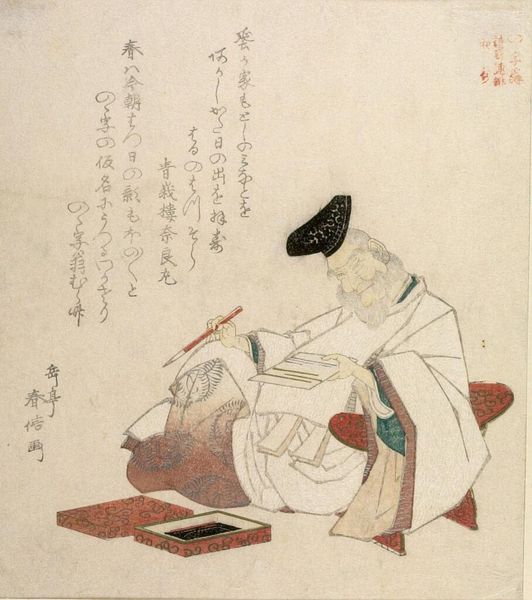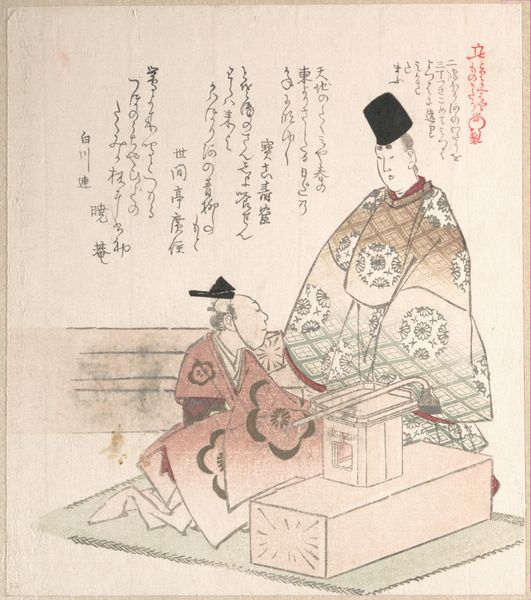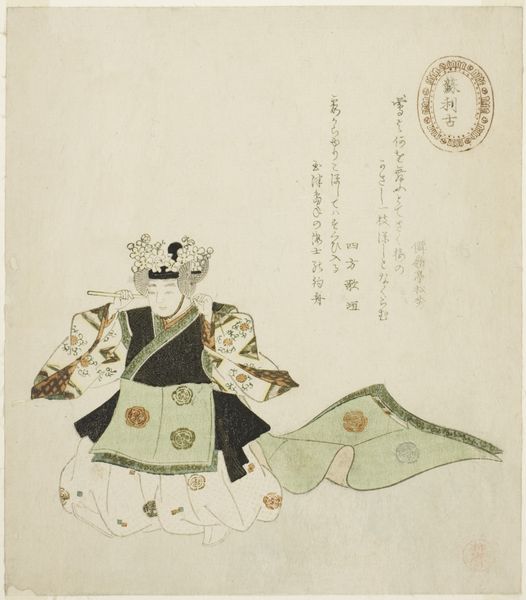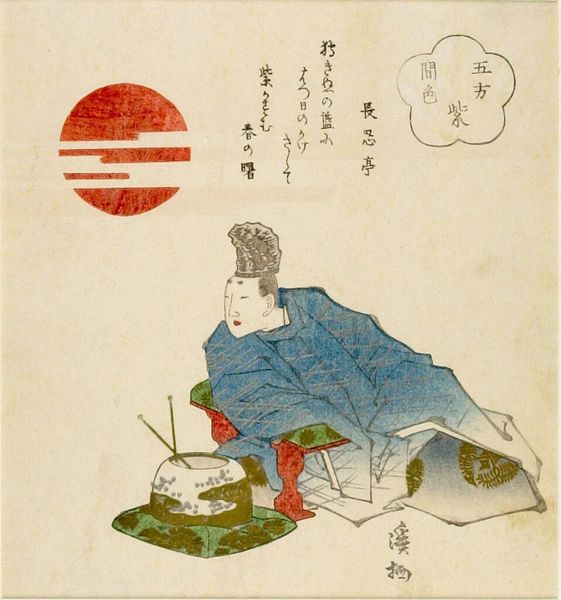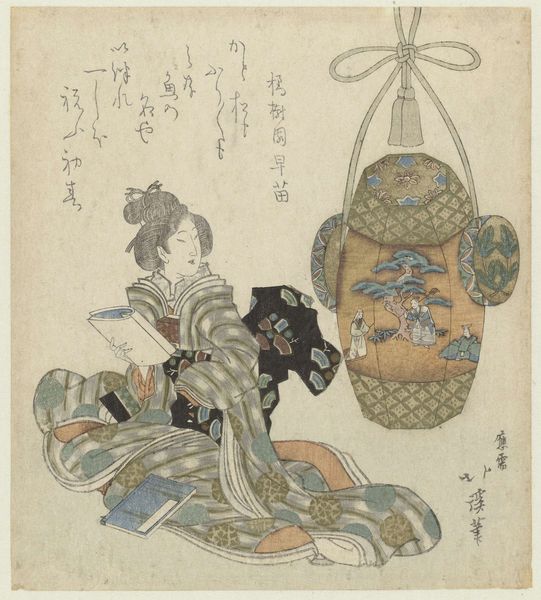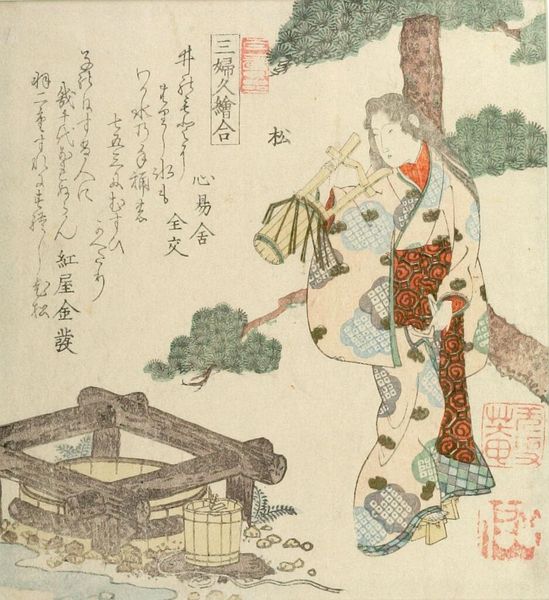
Carpenter (Banjo), from the series Ten Kinds of People (Jinbutsu jûban tsuzuki)
0:00
0:00
print, woodblock-print
#
portrait
#
narrative-art
# print
#
asian-art
#
ukiyo-e
#
figuration
#
woodblock-print
Copyright: Public domain
Editor: This woodblock print, “Carpenter (Banjo),” is by Toyota Hokkei. The figure's pose is interesting – almost reverential. It makes me wonder what role carpenters held in society at the time. How do you interpret this work, thinking about its cultural context? Curator: Considering Hokkei's work within the *ukiyo-e* tradition and its social context, it is valuable to remember the Tokugawa period, which this comes from, enforced rigid social hierarchies. Artisan roles were established and regulated. This series, "Ten Kinds of People," hints at the increasing interest in everyday lives amidst those hierarchies. The carpenter isn’t just a craftsman; he represents a vital piece of the social structure. How do you see his position reflected in his clothing and tools? Editor: I see now – it isn't a reverential pose so much as a portrait of a profession. His clothes, although simple, look carefully designed, perhaps indicating a degree of respect or pride in his craft. Curator: Precisely. Ukiyo-e prints like these played a significant role in shaping perceptions of different social classes, even as they served as popular entertainment. And the Banjo description? Banjo relates to counting - referencing perhaps, the careful work involved in calculating, budgeting, planning the wooden components used to build structures and thus emphasizing the skills of the Artisan. The artist is doing much more than a representation here. Editor: It's fascinating how a single image can reveal so much about the socio-political forces at play. Thank you for the deep dive! Curator: And thank you for pointing out his posture – it serves as a constant reminder that how figures are represented contributes to a larger dialogue around labor, skill, and worth.
Comments
No comments
Be the first to comment and join the conversation on the ultimate creative platform.
